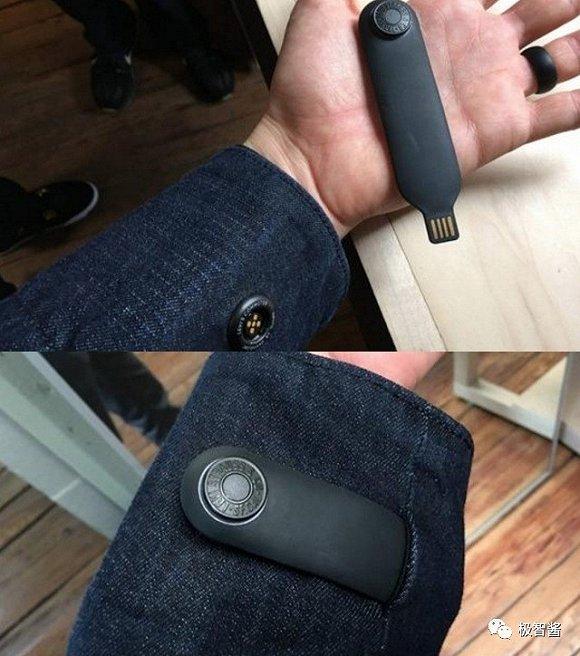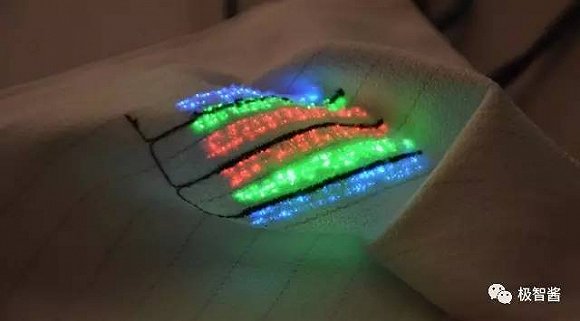Smart clothing explosion point? Electronic fabrics that can transmit information come
Electronic fabric is the future of smart clothing? Maybe this is the case. Yesterday, Jizhi Sauce reported on the smart jacket Commuter Trucker Jacket released at the “South-South-South†conference. The jacket of the smart jacket is left cuff, and the black object is "electronic tag" This jacket is priced at up to 2,400 yuan, which was jointly developed by Google's ATAP department and denim clothing brand Levi's. The most conspicuous thing about the product is that it has a "soft label" made of soft plastic in its cuff position. The module is internally packaged with Bluetooth, vibration and battery. After connecting to the phone via Bluetooth, the person wearing the dress can use another hand, like touching the phone screen or the notebook trackpad, to gesture in the area of ​​the left cuff incorporating the conductive fiber of 2.54 cm × 2.54 cm. Manipulate to perform some application functions on your phone. For example, after setting some gestures, you can adjust the volume or switch a song without taking out the phone. If you think that spending such a high price, buying such a smart jacket may be a luxury, and not sure whether smart clothing is the future trend or the current gimmick, then you may wish to pay attention to the Commuter Trucker Jacket used. A key material, which is the conductive fiber mentioned in the article above. For smart clothing, this material plays an important role in it. Electronic fabric developed by EMPA, including tough fiber materials Coincidentally, EMPA, a materials research institute based in St. Gallen, Switzerland, recently announced the successful development of a soft electronic fabric. The fabric consists of two materials, one is the durable material used in traditional garments, and the other is a fiber-optic polymer that conducts LED light as a sensor that senses the body's functions, such as sensing our heart rate. In terms of technical principle, the situation is similar to the smart watch or bracelet we bought based on LED light to measure heart rate. The fiber material first obtains the LED light, then enters the skin through self-conduction, and then receives the return signal after being affected by the pulsation of the blood vessel, and finally measures the heart rate result. Maike Quandt, head of EMPA and leading the research, further explained that parts of the body with less fat, such as wrists, fingers, earlobe, forehead, etc., can measure heart rate through their electronic fabrics. data. Therefore, EMPA originally hoped to apply this fabric to the medical field, and to make a hat or a sick suit that can always sense the heart rate of the patient. In fact, the development of the fabric itself, especially in the development of fiber optic materials that can be perfectly integrated with traditional fabrics, has overcome many challenges. Covant said that fiber optic materials are commonly used in the field of communications, and are materials that are prone to damage once they are bent. Based on the continuous smelting of the smelting technology, it is possible to produce such an optimized material that does not break easily and is extremely tough. You may be worried that clothes made of electronic fabrics will not be washed in the washing machine. Covante said: No problem, even if it is placed in a professional disinfection laundry process, it can be cleaned. At present, the electronic fabric developed by EMPA has been licensed. They will cooperate with upstream and downstream partners to formally provide products to medical institutions to help patients in need and monitor their health at any time. In addition to monitoring heart rate and applying it to the medical field, this electronic fabric can also be used to detect the body's oxygen saturation and metabolism. This means that in addition to the development of smart sick suits, there will be smart sportswear for motion monitoring. After EMPA testing, this electronic fabric does not cause any discomfort in terms of wearing feeling, but after the fabric is made into smart clothing, it will definitely integrate with other electronic devices, and this requires downstream developers, considering more specific The wearing experience. Smart sportswear with built-in heart rate sensor Although there are already some smart clothing that focuses on health data monitoring on the market, for example, some products rely on built-in sensors to monitor heart rate. However, with the maturity of electronic fabric production technology and the popularity of its applications, it may stimulate a wider market demand and become Some specific markets manufacture standard materials for smart clothing. If you don't think that all of these are just gimmicks, at least, smart jackets like Google and Levi's, as well as medical and sports products like EMPA, have given us enough inspiration to look forward to the future of smart clothing. Self Adhesive Rubber Pad and Mat Self Adhesive Rubber Feet, also known as self adhesive Rubber Feet&Foot and Self Adhesive Rubber Mat, which is made of rubber material with backing adhesive tape (glue layer) and produced by compression molding and die-cutting tool. Self Adhesive Rubber Foot are widely applied in Electronics, Medical, Vehicle, Electronic, Automotives, etc. Self Adhesive Rubber Pad,Self Adhesive Rubber Mat,Custom Self Adhesive Rubber Mat,Rubber Pad Feet Xiamen The Answers Trade Co.,Ltd. , https://www.xmanswerss.com


